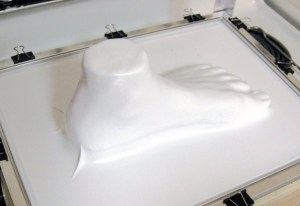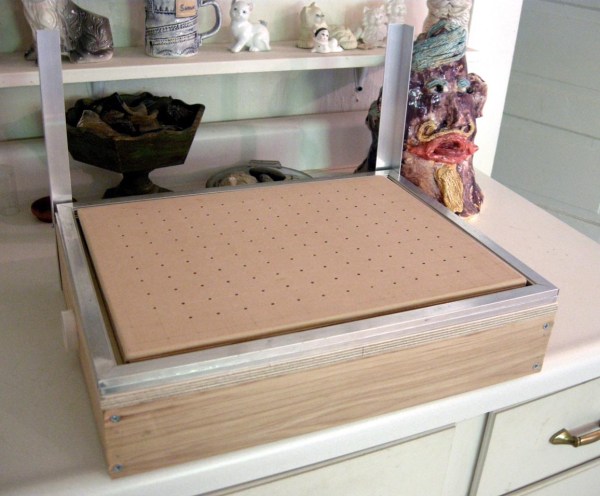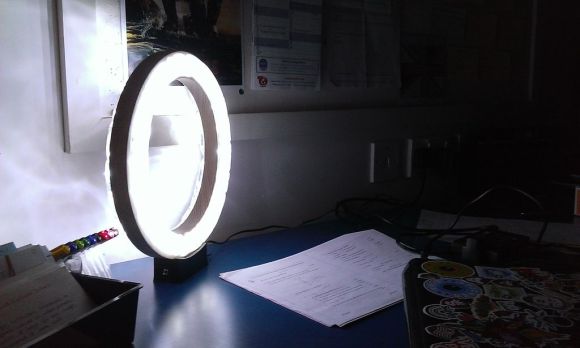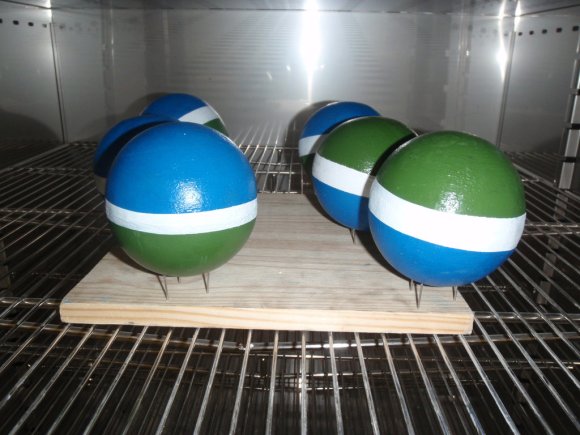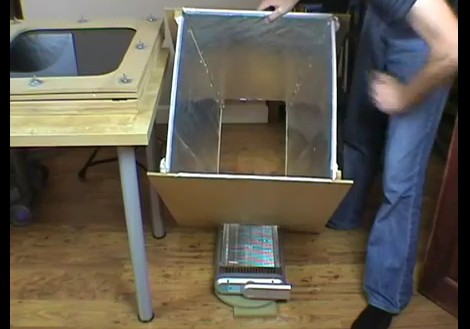Vacuum Forming is a process used to mold plastic into a desired shape. A thin sheet of plastic is heated to a soft state and then air pressure is used to press the plastic down around or into a mold. Vacuum forming can be used to make a variety of items, anything from product packaging to bath tubs.
That being said, a vacuum former is probably one of those things that would be nice to have around but may not get a lot of use. Therefore, spending any significant amount of money on one would result in a low-value situation. For some folks, building one from scratch may be the way to go. [Amalgamized] built his own low-cost vacuum former and did a great job documenting the build.
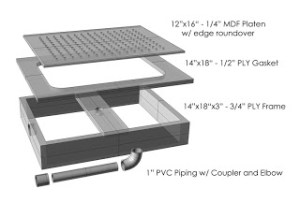 There is a two-pronged attack to keep the costs down on this project. First, the frame is made from readily available materials that you probably have kicking around in your wood scrap bin. The sides of the frame are 3/4″ plywood and the hole-filled top is made from 1/4″ MDF. A piece of PVC pipe connects the chamber below the top piece of MDF to a shopvac. The shopvac pulls the air down through the top’s holes; think reverse air hockey table.
There is a two-pronged attack to keep the costs down on this project. First, the frame is made from readily available materials that you probably have kicking around in your wood scrap bin. The sides of the frame are 3/4″ plywood and the hole-filled top is made from 1/4″ MDF. A piece of PVC pipe connects the chamber below the top piece of MDF to a shopvac. The shopvac pulls the air down through the top’s holes; think reverse air hockey table.
Attack prong #2 is that there is no dedicated heater. Binder clips secure the plastic sheets to an aluminum window frame which are then put in the oven for a few minutes between 250 and 300ºF. When the plastic starts to droop, it is quickly removed from the oven and placed over a mold. The shopvac creates a low pressure zone under the plastic and atmospheric pressure pushes the plastic down around the mold.
